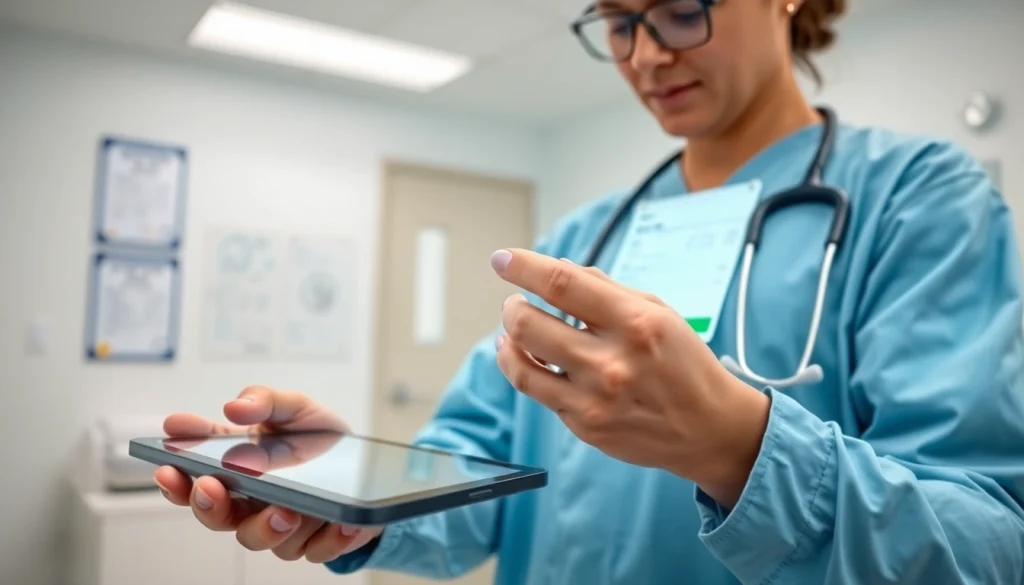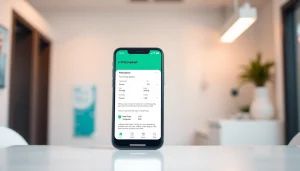Maximizing Productivity with Eprescription Apps for Android in Modern Healthcare

The healthcare industry is continually evolving, driven by technological advancements and the necessity for efficient patient care. In response to these demands, e-prescription apps have emerged as a vital tool for healthcare providers. Particularly for those using Android devices, eprescription apps for android offer features that optimize the prescription process, enhance patient safety, and streamline workflows. This comprehensive guide will explore the various aspects of e-prescription apps, helping healthcare professionals make informed decisions.
Understanding Eprescription Apps for Android
What Are Eprescription Apps?
E-prescription apps are digital solutions that enable healthcare providers to write and transmit prescriptions electronically. These applications facilitate real-time communication between providers, pharmacies, and patients, eliminating the reliance on handwritten prescriptions that can lead to errors and wasted time. By leveraging e-prescription apps, healthcare providers can ensure that medications are accurately prescribed, tracked, and managed.
Key Features of Eprescription Apps for Android
When selecting an e-prescription app, it’s imperative to understand the features that differentiate these applications. Key features of e-prescription apps for Android include:
- Prescription Management: Comprehensive management tools that allow providers to create, edit, and monitor prescriptions.
- Drug Interaction Alerts: Automated alerts that inform providers of potential drug interactions, allergies, or contraindications, ensuring patient safety.
- Integration with Pharmacy Networks: Seamless connections with pharmacy systems, enabling faster dispensing of medications.
- Patient Records Management: Access to patient prescription history, medical records, and lab results, all consolidated within the app.
- User-Friendly Interface: Intuitive design that simplifies the prescribing process, making it accessible for all healthcare professionals.
Benefits for Healthcare Providers and Patients
The adoption of e-prescription apps brings numerous advantages for both healthcare providers and patients:
- Enhanced Efficiency: E-prescription apps reduce the time spent on paperwork, allowing healthcare providers to focus on patient care.
- Improved Accuracy: The digitization of the prescription process minimizes errors associated with illegible handwriting, incorrect dosages, or missing information.
- Increased Patient Safety: By providing alerts for potential drug interactions and allergies, e-prescribing helps ensure that patients receive the safest and most effective medications.
- Convenience: Patients can have their prescriptions sent directly to their preferred pharmacies, saving them time and hassle.
- Better Medication Compliance: Through features like refill reminders and medication tracking, e-prescription apps can help improve patient adherence to prescribed therapies.
Choosing the Right Eprescription App for Android
Evaluating User Friendliness and Interface
When choosing an e-prescription app for Android, one of the primary considerations is user-friendliness. A good app should have an intuitive interface that allows healthcare providers to navigate easily and access essential features quickly. Potential users should look for apps that can be mastered quickly with minimal training. Testing different apps through demo versions, if available, can provide insights into their usability.
Identifying Essential Integration Options
Integration capabilities are vital for optimizing workflows within healthcare environments. When selecting an e-prescription app, determine whether it can integrate with existing Electronic Health Records (EHR), practice management systems, and pharmacy systems. This capability streamlines operations and reduces redundant data entry, allowing for more effective communication between healthcare providers and pharmacies.
Comparing Costs and Licensing Models
Pricing models for e-prescription apps can vary significantly. Some apps are offered on a subscription basis, while others may have one-time purchase options. It’s crucial to evaluate the total cost of ownership, considering factors such as licensing fees, potential hidden costs for updates or support, and the overall return on investment. Budget constraints will often dictate the selections available, but investing in a quality solution can lead to significant long-term savings.
Implementation Steps for Eprescription Apps
Setting Up the Eprescription App in Your Practice
Once the right e-prescription app has been chosen, effective implementation is essential. The first step is to configure the app according to the specific needs and workflows of the practice. This can include importing patient data, setting up user accounts for staff, and customizing templates for frequently used prescriptions. Adequate setup ensures the app functions smoothly from day one, minimizing disruptions in daily operations.
Training Staff for Efficient Use
Even with a user-friendly interface, proper training is critical to ensure that all staff members can utilize the e-prescription app efficiently. Training sessions should cover all features, best practices, and tips for troubleshooting common issues. Utilizing hands-on practice sessions and real-life scenarios during training can help staff feel more comfortable when using the app in actual patient interactions.
Integrating with Existing Healthcare Systems
Integration is beneficial for enhancing the efficacy of an e-prescription app. Ensure that the app can connect with the practice’s existing healthcare systems, including EHRs and lab reporting systems. This interconnectedness facilitates the sharing of patient data and streamlines the prescribing process, ultimately improving the quality of patient care.
Common Challenges and Solutions
Dealing with Technical Difficulties
Despite careful planning, technical difficulties can arise during the use of an e-prescription app. Common issues may include software glitches, connectivity problems, or compatibility issues with other systems. Having a dedicated IT support team or service provider on standby can help swiftly resolve these issues. Regular software updates and maintenance checks can also mitigate many technical difficulties before they occur.
Ensuring Patient Data Security
Data security is paramount when managing patient information. E-prescription apps must comply with regulatory standards, such as HIPAA, to protect patient confidentiality. Choosing apps with robust security features, including data encryption and secure user authentication, can mitigate risks. Additionally, training staff on data protection best practices is essential to ensure that all personnel understand how to safeguard sensitive information.
Navigating Insurance and Billing Issues
Insurance claims and billing procedures can be challenging. E-prescription apps should facilitate insurance verification and claims processing to minimize the administrative burden on healthcare providers. Users should familiarize themselves with the app’s functionalities regarding insurance integration and billing capabilities. Moreover, maintaining constant communication with insurance representatives can help navigate any complexities that arise.
Measuring Success with Eprescription Apps for Android
Key Performance Indicators to Track
To measure the success of e-prescription apps in a practice, it is essential to track specific key performance indicators (KPIs). These may include:
- Prescription error rates: Monitor the frequency of prescription inaccuracies to assess the app’s impact on prescribing quality.
- Patient adherence rates: Evaluate how often patients follow through with prescribed medications to gauge the effectiveness of communication tools within the app.
- Time spent on prescription management: Calculate the reduction in time spent by staff on managing prescriptions to measure efficiency gains.
Gathering Patient Feedback for Improvement
Patient feedback can provide valuable insights into the efficacy of e-prescription apps. Surveys can be deployed to solicit patient experiences regarding their prescription process, including ease of pharmacy interactions and access to medication. Feedback loops allow healthcare providers to make data-driven adjustments to improve patient service and satisfaction continuously.
Adjusting Workflows Based on App Performance
Selecting an e-prescription app is just the beginning; consistent evaluation and adjustment are necessary to optimize workflows. Analyze collected data regularly to identify bottlenecks and areas for improvement. Modifications may include retuning workflows or offering additional training to staff based on observed usage patterns and feedback. This adaptive approach will maximize the benefits of the e-prescribing process over time.







